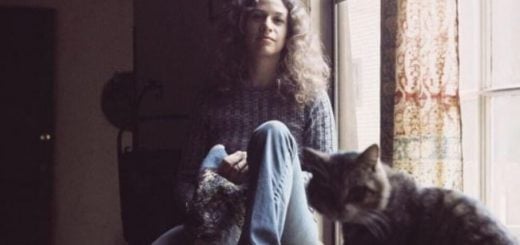“You’ve Got a Friend” by Carole King
Carole King’s “You’ve Got a Friend” song is similar in sentiment to another track found on her iconic Tapestry album which is entitled “Where You Lead“. That is to say that in both cases, the singer is emitting a strong sentiment of loyalty and self-sacrifice towards a loved one.
However, in this case that individual would be “a friend”, not a lover (though she does refer to the person as “baby”). And what King is telling this individual, basically, is that even in his or her darkest hour he can count on her friendship. And this is not only a vow she is making but also something she wants the addressee to remember as they go through life and interact with people whose lack of friendliness may be discouraging. Indeed the singer desires for the addressee to rest assured that whenever a friend is needed, s/he already has one in her.

Did Carole King write “You’ve Got a Friend”?
Yes. This song was written by Carole King in the late-1960s. Her version came out as part of her album “Tapestry” on 10 February 1971. King’s original was put out by labels Ode Records and A&M Records. The former was owned by Lou Adler, the same musician who produced the song and the entirety of “Tapestry”.
James Taylor’s Version
A more famous rendition was released by James Taylor, one of the musicians who worked with Carole King on “Tapestry”. In fact that project and Taylor’s own project “Mud Slide Slim and the Blue Horizon”, which featured his version of “You’ve Got a Friend”, were recorded concurrently.
According to Taylor’s original story of the song, Carole King wrote it in response to a line from a track he dropped a year earlier entitled “Fire and Rain” (1970). However, King recounts that “the song wrote itself” and that she felt “it was written by something outside (herself)”. Additionally she described the sensation of conceiving it as being “as close to pure inspiration as (she’s) ever experienced”.
Also interesting to note is that Taylor played acoustic guitar, in addition to contributing background vocals, to Carole King’s version of “You’ve Got a Friend”. And both of their versions were backed up by another female musician who was poppin’ at the time, Joni Mitchell. And yes! The same Joni Mitchell who wrote and performed the iconic song “Big Yellow Taxi“!
Achievements of “You’ve Got a Friend”
Carole King’s version of this track never came as a single. But James Taylor’s did and was a big hit, topping the Billboard Hot 100 (his only time accomplishing that feat) and the Cash Box Top 100. Furthermore, it hit a celebration-worthy number 4 in the United Kingdom (the UK Singles Chart). It also earned James Taylor a Best Male Pop Vocal Performance Grammy Award in 1972. As the song’s official writer, Carole was also honored with the Song of the Year accolade at the same ceremony. And in the latter case, it marked the first time a female had ever taken home that particular trophy.
Other Famous Covers
Aside James’ version, several other notable versions have been released. For example, the Brand New Heavies also dropped a moderately-successful yet notable version in 1997. This version hit number 9 in the UK and managed to get listed in quite a few other European countries.
Other famous musicians who have released their own renditions of “You’ve Got a Friend”, to varying levels of success, include the following:
- Dusty Springfield (1971)
- Donny Hathaway
- Roberta Flack (1972)
- Aretha Franklin (1972)
In 1998, a supergroup featuring not only Carole King but also Gloria Estefan, Shania Twain and Céline Dion beside her released another version of this classic.
This classic appears on 1995’s “Tapestry Revisited: A Tribute to Carole King” project. On the said project, it is rendered by BeBe & CeCe Winans with Aretha Franklin as a feature.
What music genre is “You’ve Got a Friend”?
The version released by King in 1971 fits perfectly into the soft rock genre. Taylor’s version, on the other hand, belongs to both the soft rock and folk rock music genres. As for the version released by The Brand New Heavies in 1997, that is an electronic dance music genre.








